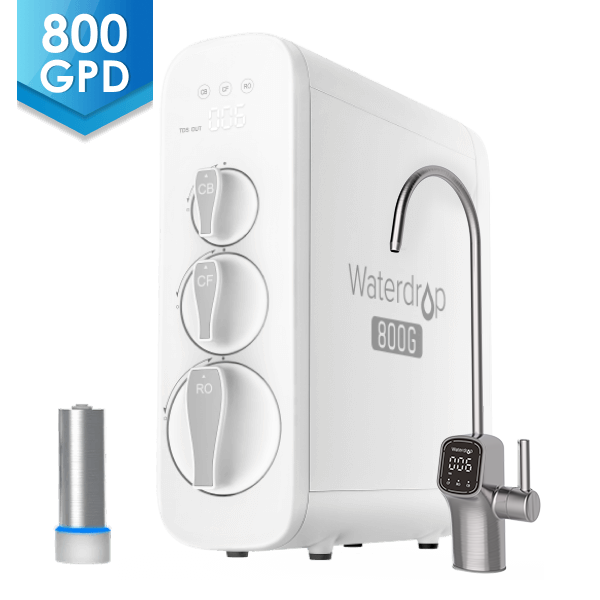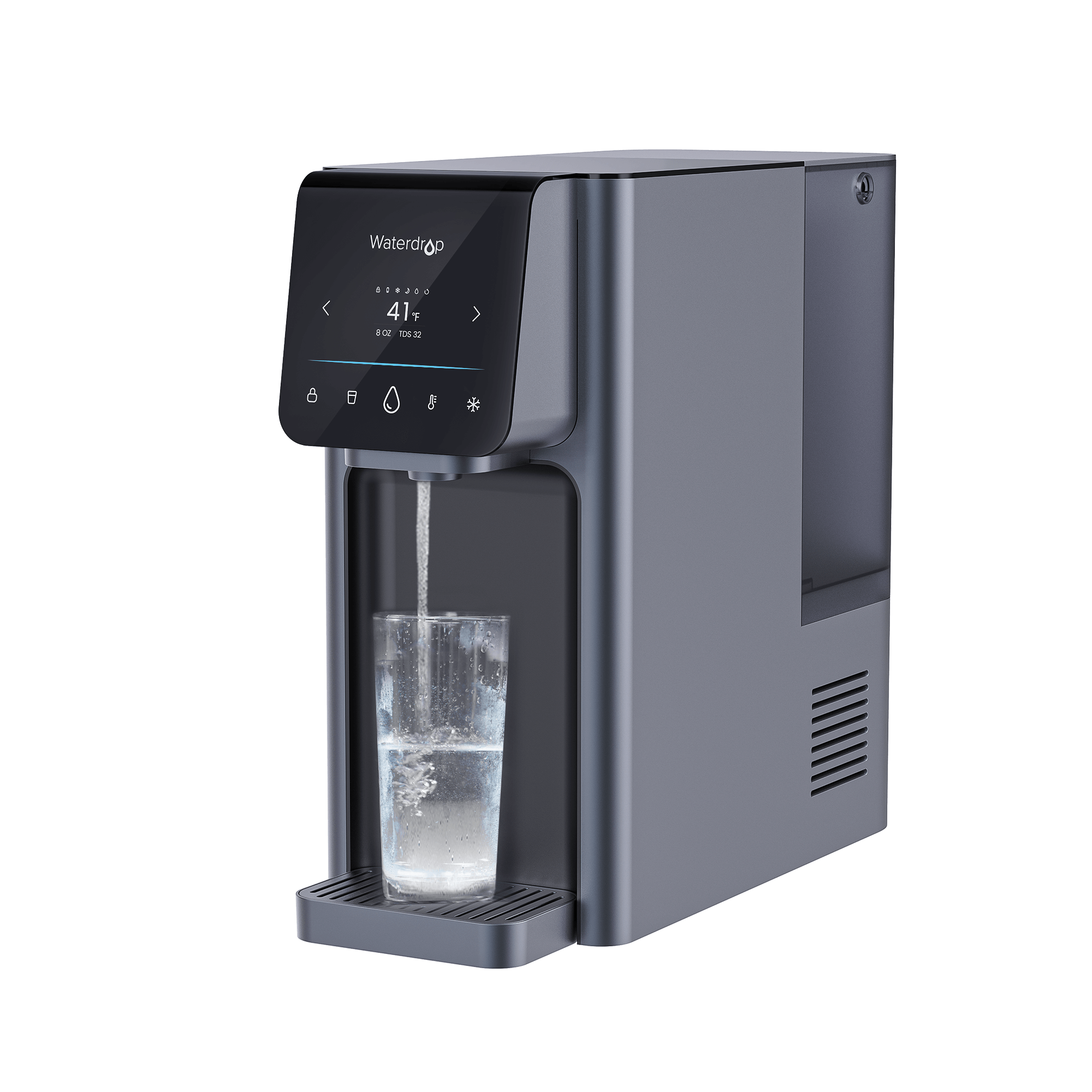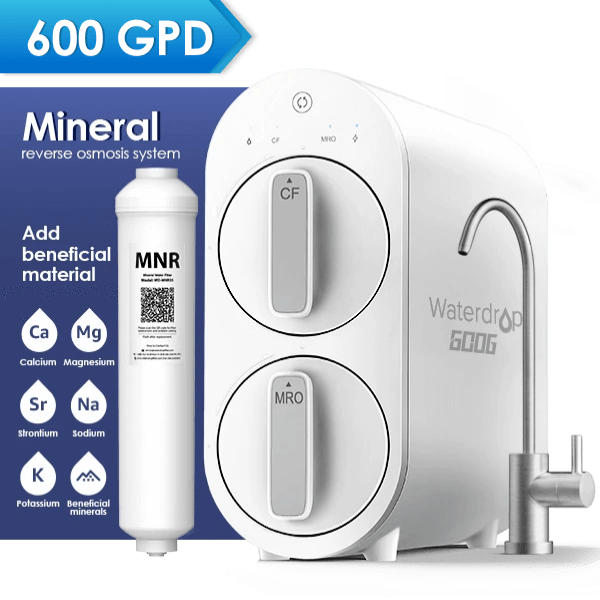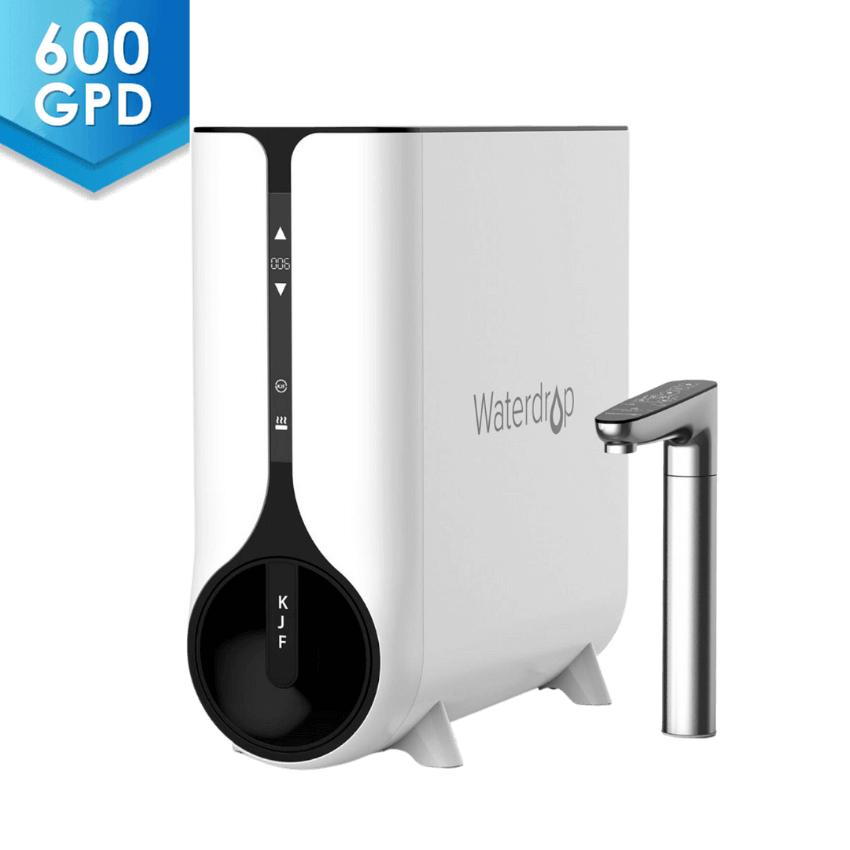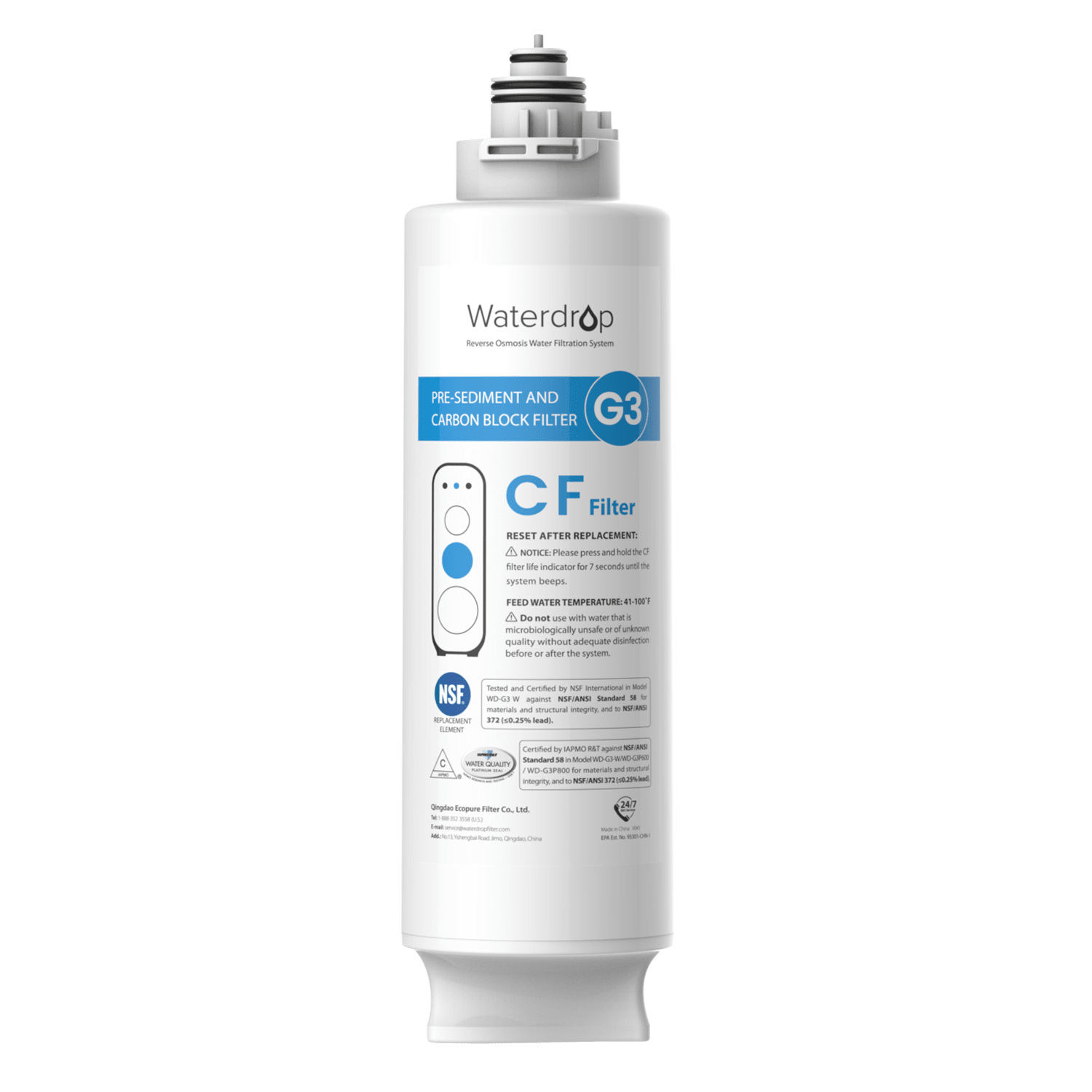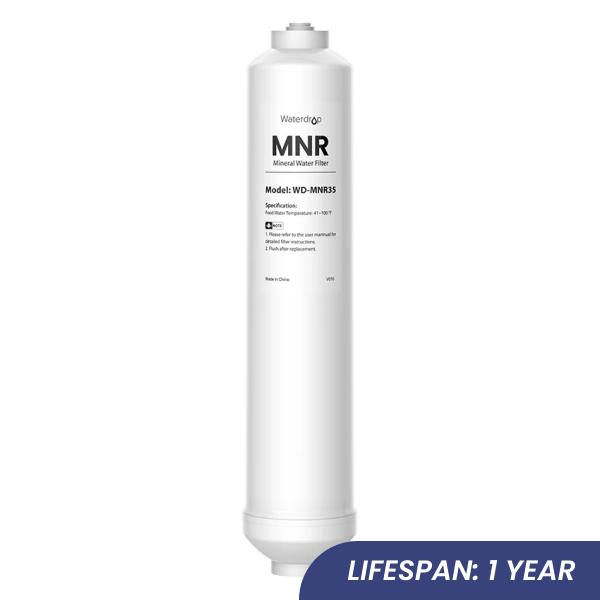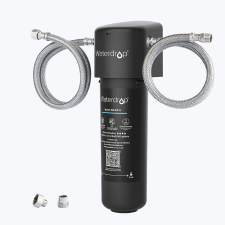Does Reverse Osmosis Remove Heavy Metals?
by Dr. Jonathan Doyle - Updated February 18, 2025
Reverse osmosis (RO) is one of the most effective and widely used water filtration methods for improving the quality of drinking water. One of the primary reasons people invest in RO systems is their ability to lower heavy metal concentrations in water. While no system can guarantee complete removal of all contaminants, reverse osmosis plays a crucial role in significantly reducing the levels of harmful heavy metals, making your drinking water safer.
This blog explores how reverse osmosis works, its effectiveness in lowering heavy metals like lead, arsenic, mercury, and cadmium, and why it is an excellent choice for households seeking cleaner, healthier water.
What Is Reverse Osmosis?
Reverse osmosis is a water filtration technology that uses a semi-permeable membrane to filter out contaminants, including salts, chemicals, and heavy metals. Water is forced through the membrane under pressure, leaving behind larger particles, while only pure water passes through. This process makes reverse osmosis an ideal solution for removing a wide range of contaminants, including heavy metals.
How Do Heavy Metals Enter Drinking Water?
Heavy metals such as lead , arsenic , mercury , and cadmium can enter drinking water through various sources. These metals may leach into water from old plumbing systems, industrial waste, mining activities, or agricultural runoff. Long-term exposure to heavy metals in drinking water can pose serious health risks, which makes it important to find effective solutions for reducing their presence.

Health Risks of Heavy Metals in Drinking Water
Long-term exposure to heavy metals in drinking water can lead to a variety of serious health issues , including:
- Neurological Damage: Lead and mercury are particularly harmful to the nervous system, causing developmental delays in children and cognitive issues in adults.
- Kidney and Liver Damage: Metals like cadmium and mercury can accumulate in vital organs, causing long-term damage and impairing their function.
- Cancer: Both arsenic and cadmium are carcinogens, meaning they can increase the risk of certain cancers when consumed over a long period.
- Bone Health: Cadmium exposure has been linked to bone density loss and an increased risk of fractures and osteoporosis.
- Reproductive Health: Heavy metals like lead and mercury can affect fertility and cause developmental issues in offspring.
The Effectiveness of Reverse Osmosis in Lowering Heavy Metals
Reverse osmosis is widely regarded as one of the best filtration methods for lowering heavy metal concentrations in water. Below, we will look at how reverse osmosis helps to reduce some of the most common heavy metals:

- Lead: Lead is one of the most harmful heavy metals in water, especially in older plumbing systems. Reverse osmosis is highly effective at lowering lead levels by up to 99%, making it an excellent choice for homes with aging pipes or those in areas where lead contamination is a concern.
- Arsenic: Arsenic contamination is another significant issue in some groundwater sources. Reverse osmosis can effectively lower arsenic levels by 95% to 99%, providing peace of mind for people living in areas with high arsenic levels in their drinking water.
- Mercury: Mercury is a toxic metal that can accumulate in the kidneys and nervous system. Reverse osmosis can lower mercury concentrations by up to 95%, which is particularly beneficial for individuals concerned about mercury exposure.
- Cadmium: This heavy metal is commonly found in industrial areas and can damage the kidneys over time. Reverse osmosis is highly effective in lowering cadmium levels by 90% to 98%, providing protection against its harmful effects.
For an effective solution to reduce heavy metals, the Waterdrop X12 is an excellent choice. Its 11-stage reverse osmosis filtration system provides rapid, pure hydration while infusing healthy minerals. With its eco-friendly design and long-lasting filters, Waterdrop X12 ensures clean, safe water for your household.
Why Choose Reverse Osmosis to Lower Heavy Metals?
Reverse osmosis offers several advantages when it comes to lowering heavy metal levels in drinking water:
- Comprehensive Filtration: Reverse osmosis is highly effective at filtering out a wide range of contaminants, not just heavy metals. It also reduces chlorine, fluoride, and other harmful substances, ensuring cleaner water.
- Affordable and Easy to Use: Reverse osmosis systems are available at various price points, making it an accessible option for many households. The installation process is straightforward, and regular maintenance is simple.
- Highly Efficient: Many modern reverse osmosis systems come with advanced filters and membranes that ensure optimal filtration efficiency, lowering heavy metal levels while maintaining water quality.
- Long-Term Benefits: By investing in a reverse osmosis system, you can ensure that your household has access to cleaner, safer drinking water for years to come. The health benefits of drinking water free from heavy metals are invaluable.
The Role of a Heavy Metal Detox
In addition to using reverse osmosis to lower heavy metals in drinking water, it’s important to consider a heavy metal detox for further support. While RO systems significantly reduce the presence of heavy metals in water, a heavy metal detox is a holistic approach to helping your body remove any accumulated toxins.

A heavy metal detox can involve dietary changes, supplements, and other detoxifying practices. Common detox methods include:
- Detoxifying foods: Foods like cilantro, garlic, and chlorella are known to support the body’s ability to eliminate heavy metals naturally.
- Chelation therapy: This medical process involves using chelating agents to bind to heavy metals and help eliminate them from the body.
- Hydration: Drinking clean, purified water—like that from a reverse osmosis system—helps the body flush out toxins more effectively.
A heavy metal detox should be approached carefully and under the guidance of a healthcare professional, especially if you have been exposed to heavy metals over an extended period.
Conclusion
Reverse osmosis is a reliable and effective method for lowering heavy metals in drinking water, offering a safe and efficient way to reduce harmful substances like lead, arsenic, mercury, and cadmium. While no filtration system can guarantee 100% removal, reverse osmosis significantly reduces the concentration of these heavy metals, providing cleaner, safer water for you and your family.
By using a reverse osmosis water filter system , combined with a heavy metal detox approach, you can further enhance your protection against the health risks associated with heavy metals. A healthier lifestyle begins with cleaner water, and reverse osmosis is an excellent first step towards achieving that goal.
Thank You for Subscribing!
A 10% discount code has been sent to your email, and you also have a chance to win a new K19-H Countertop RO System. We will notify the winners via email.
Contaminants Detected in Fruitland Water Special Service District
30
Contaminants
EXCEED EWG HEALTH GUIDELINES
EXCEED EWG HEALTH GUIDELINES
30 Total Contaminants in Your Water
Water Provider
Fruitland Water Special Service DistrictPopulation Affected
120,000Water Source
Ground waterExceeds Guidelines
Others Detected


